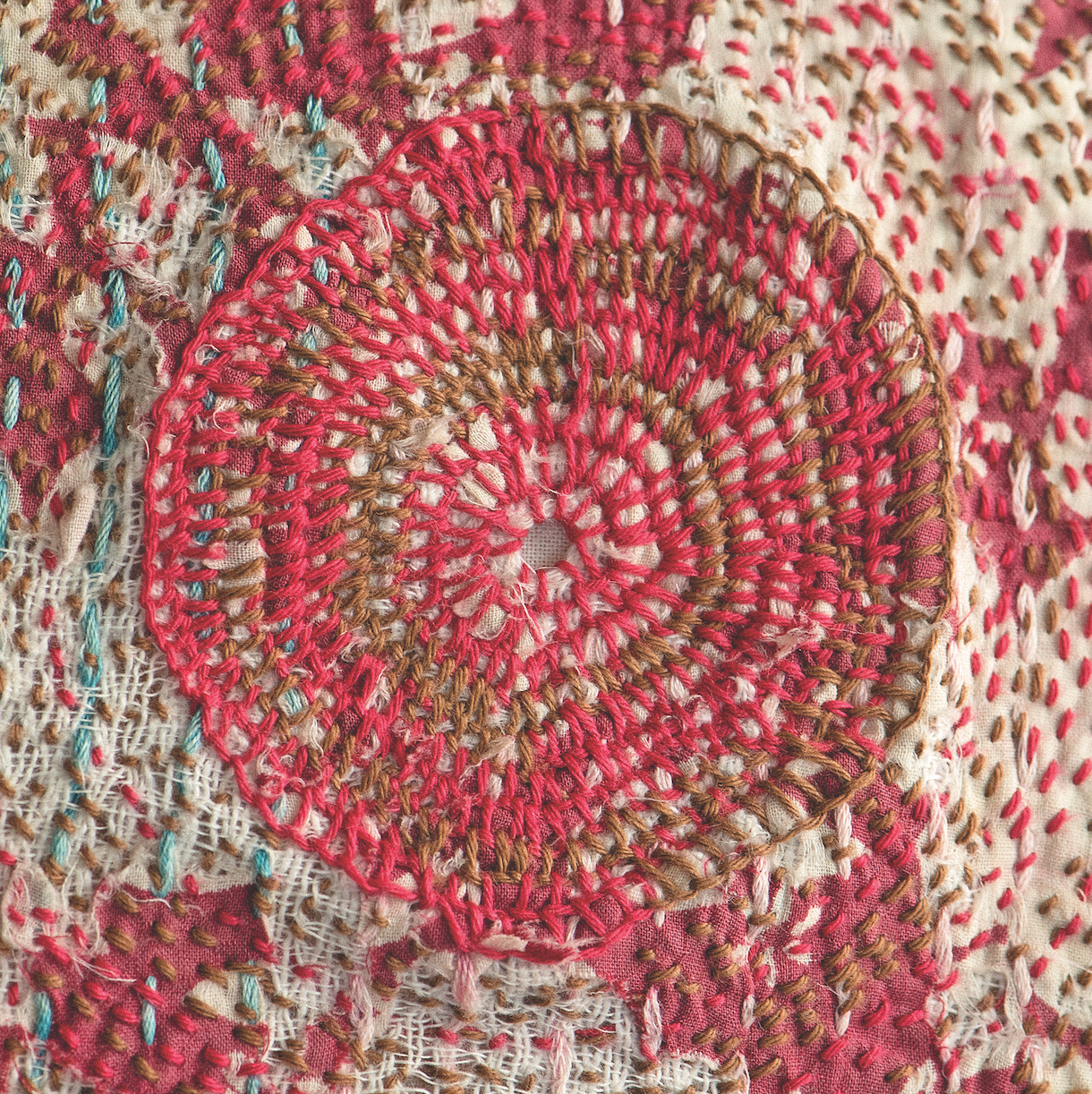How to Do Visible Mending with Hikaru Noguchi
Clothes used to be precious. During Queen Victoria’s era, most people carefully mended their clothes. The beautifully decorated darning tools and sewing boxes in museums show that mending was an integral part of the culture. During World War II, when there was a shortage of supplies, the government encouraged simple living and recommended darning using a mushroom. I had my life-changing moment in England when I met Rachael Matthews. She introduced me to a darning mushroom and taught me how to use it. This was when I saw the sweater. Although the sweater was mass produced, it was a present and much cherished. After it had suffered repeated washing and many holes, a new mosaic-like stratum was created by darning using colourful wool. I – who used to say, ’Make it look as good as new’ and ’I promise mended holes won’t be seen’ – have realised that visible mending can be a means of expression. A shocking experience for me. The darning mushroom made by Rachael’s father, an architect and craftsman, was made from thick dried branches broken by the wind from trees in his home in the Lake District. This is the spirit of ingenuity – making the most of the materials you find around you.
Currently in the UK, Rachael Matthews, Celia Pym, Freddie Robbins, Tom of Holland, Amy Twigger Holroyd and Sanae Kido are all active researchers in the art of darning. Hikaru Noguchi's handmade darning mushrooms and books can be found at Loop London, where Hikaru also teaches her visible mending workshops.
This project was featured in Issue 93 Rethink.
Free downloadable complete instructions are available.
Delve deeper into the beauty of threads that tell stories—discover On Mending, Celia Pym and its tender meditations on care, memory, and the quiet art of repair.
Inspired by Hikaru Noguchi’s artful approach to visible mending? Extend that creative care into conversation—watch the Caring for Your Clothes virtual event, where she joins Orsola de Castro and others to explore thoughtful, textile-conscious methods for sustaining our wardrobes.
Share





